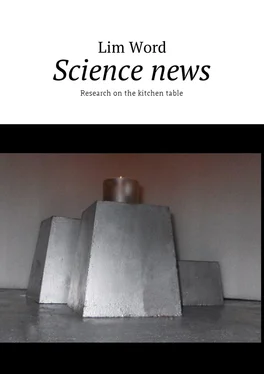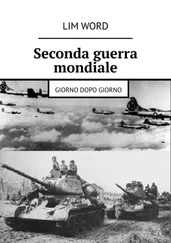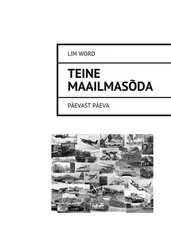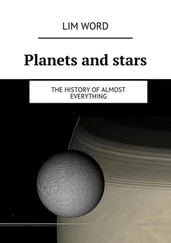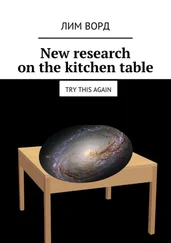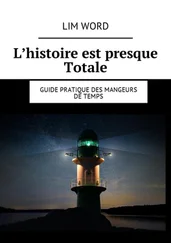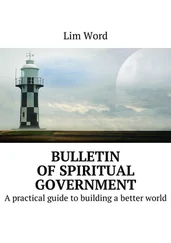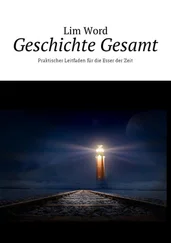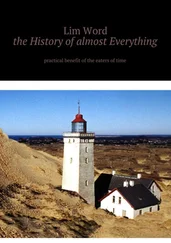Lim Word - Science news. Research on the kitchen table
Здесь есть возможность читать онлайн «Lim Word - Science news. Research on the kitchen table» — ознакомительный отрывок электронной книги совершенно бесплатно, а после прочтения отрывка купить полную версию. В некоторых случаях можно слушать аудио, скачать через торрент в формате fb2 и присутствует краткое содержание. ISBN: , Жанр: Физика, Прочая научная литература, Химия, на английском языке. Описание произведения, (предисловие) а так же отзывы посетителей доступны на портале библиотеки ЛибКат.
- Название:Science news. Research on the kitchen table
- Автор:
- Жанр:
- Год:неизвестен
- ISBN:9785448566929
- Рейтинг книги:5 / 5. Голосов: 1
-
Избранное:Добавить в избранное
- Отзывы:
-
Ваша оценка:
- 100
- 1
- 2
- 3
- 4
- 5
Science news. Research on the kitchen table: краткое содержание, описание и аннотация
Предлагаем к чтению аннотацию, описание, краткое содержание или предисловие (зависит от того, что написал сам автор книги «Science news. Research on the kitchen table»). Если вы не нашли необходимую информацию о книге — напишите в комментариях, мы постараемся отыскать её.
Science news. Research on the kitchen table — читать онлайн ознакомительный отрывок
Ниже представлен текст книги, разбитый по страницам. Система сохранения места последней прочитанной страницы, позволяет с удобством читать онлайн бесплатно книгу «Science news. Research on the kitchen table», без необходимости каждый раз заново искать на чём Вы остановились. Поставьте закладку, и сможете в любой момент перейти на страницу, на которой закончили чтение.
Интервал:
Закладка:
Science news
Research on the kitchen table
Lim Word
© Lim Word, 2018
ISBN 978-5-4485-6692-9
Created with Ridero smart publishing system
…How to collect scattered in space, as if already asleep energy? Obviously, there are natural natural processes that increase its quality to its original value.
These are not some complicated devices. Everything happens by itself. You just need to be able to see.
The hot kettle on the table gives energy to the space – the table, the streams of air, etc. With the passage of time it cools down. The motion of molecules is evenly distributed in the environment. The energy of high order disappeared, replaced by a uniform thermal background. Is it possible to reverse the process? Will the impulses from the environment of the teapot be transferred in a particular case, will it boil right on your kitchen table?
This is how it should be if in nature, from the beginning of time, there is a cycle of energy.
One of the author’s first publications on this topic is an article in “TM”, No. 4, 2000:
“What is the difference between an object of the macrocosm – a monolith – from a cloud of dust obtained as a result of its long grinding and subsequent shaking? Well-known: the area of contact with the environment of another phase, for example, with gas. That is why the chemical reactions that occur in powders are completely unaffected by monoliths, iron filings burn in the air, whereas an iron nail, except in pure oxygen…
Dusty laser?
But the question is: what happens when the monolith is grinded or, conversely, how does the dust coalesce again into a monolith with a radiation-absorption spectrum? Let’s help the laws of quantum physics.
In monolith, the spectrum runs through all the energy levels, theoretically, as many as the atoms in the body. In a gas, individual atoms radiate independently, on a few levels. But when the neighboring atoms appear, the levels shift so as not to repeat each other, the prohibition principle introduced at the beginning of the 20th century works. Wolfgang Pauli: there can not be interconnected atoms, the energy parameters of which are completely the same.
But the powder is an intermediate state between the gas and the solid. Apparently, a sharp boundary, on which the properties change spasmodically, can not be carried out. And accordingly, the spectrum of the dust cloud, as the particles are fragmented, will approach the gas spectrum.
But what happens if you thicken it to the volume of the original monolith?
When merging, say, a hundred particles, each energy level will take at once one hundred atoms. To restore the order adopted in the microcosm, each of these supersaturated levels will tend to split into a hundred isolated spectral lines. The most natural way to restore the energy hierarchy for atoms of a newly formed monolith is to radiate a certain number of electromagnetic quanta. Consequently, the condensed cloud of dust will become generally colder than the surrounding environment.
Are we humans the same hubs? Than our cells are not isolated “motes” separated by membranes? But the permeability of membranes is constantly changing. And are there many unrelated properties of living organisms that are not associated with such a unification of many millions of “dust particles”?”
Continuation – in the article “Energy concentrators”, “TM” No. 6, 2002, already based on practical, not mental experiments.
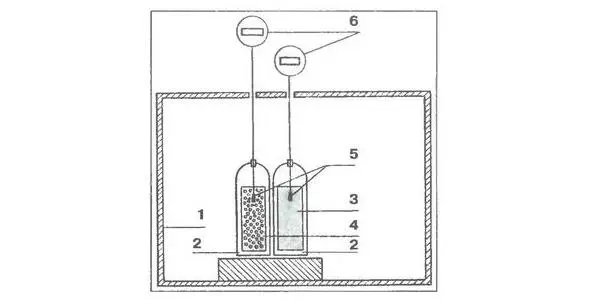
1. cabinet with thermal insulation
2. Dewar vessels
3. continuous medium (water)
4. porous medium
5. electronic thermometers (error not more than 0,02С)
6. temperature sensors
Two vessels – one with a porous medium, the other – with a solid, are located in a thermally insulated cabinet. They have thermal sensors; the temperature inside is measured every 20 minutes.
It was found out that the temperature in a container with a granulated medium (wet sand, etc.) varies abruptly, with considerable amplitude. The solid medium gives a very flat temperature graph, without bursts and any periodicity.
Porous, granular, otherwise – ordered matter has the property of ordering – to collect in space and time, energy. Probably, this property manifests itself on different scales. Local heating can also occur in a handful of sand, earth, porous clay, only one or two degrees, and in large areas, in square kilometers. The temperature can increase by tens, hundreds of degrees, possibly accompanied by radioactive emissions. So the energy of a high level comes back to the world.
In a certain way ordering matter, it is possible to achieve a predictable ejection of heat (or cold), in certain areas of the created system. Covered by feedback, the system creates a “cold-heat” pulsation; from this one can obtain a steady stream of energy. The ordering can be performed on macroscopic (fractions of a millimeter) and micro-levels (the distance between the atoms of the crystal). In the latter case, it is possible to achieve not intermittent flicker, “eternal radiance”.
In the first approximation, the concentration system looks like the organization of flows of a homogeneous, initially disconnected substance to some common point, a kind of “heart” with subsequent separation.
Some successes in this, perhaps even intuitively realizing the essence of the process, were achieved by American researchers Fleischman and Pons. They are known to conduct electrolysis of heavy water on palladium electrodes. Their idea – the molecules of the hydrogen isotope accumulate in the crystal lattice of the metal, as closely as possible – and interact. As a result of the “cold nuclear fusion” (NNS), an anomalous heat release occurred (four times higher than the calculated one), but, in addition, there was no neutron radiation associated with it.
In the end, experiments – although they were reproduced in other laboratories, were abandoned, they were almost forgotten. But, with a satisfactory theory: “A structured substance structures energy, creates an order around itself,” they can be revived, put on an appropriate, correct pattern. Hydrogen atoms were collected in one small volume, and therefore they were forced to radiate (relatively soft) photons from their upper energy levels. Isotopes, the synthesis of light nuclei, radiation – this can be forgotten. New reactors of Eternal Motors are loaded with any, not radioactive, but – structured substance.
Note: A structured body (massif) is a cluster of clusters (dust grains) of a substance of equal shape, composition that is some distance from each other in a semitransparent medium or a vacuum. An additional structure in time, give periodic rendezvous and separation of particles – which is like breathing or pulse.
The author reproduced the experiments of Fleischmann and Pons at home, replacing heavy water with ordinary tap water, and palladium electrodes with sand.
It turned out this article:
Electrons get tired?
“Some of the fundamental laws of physics are so simple and obvious that no one doubts their justice, and no one is involved in their verification. In particular, this applies to Ohm’s law, according to which the direct current in the circuit (in any case at its low density) is equal to the voltage divided by the resistance: I = U / R. This is followed by other rules of electrical engineering. For example, according to the Joule-Lentz law, the heat W allocated to the resistance R is directly proportional to the voltage drop across it U, the current I and the duration of its passage t, that is, W = R-U-1-t. Therefore, if two identical resistances are sequentially included in a closed circuit, then the same amount of heat should be allocated to them in a unit of time. It seems quite obvious that, bypassing the first resistance, the electrons are not able to either acquire additional energy or lose it.
Читать дальшеИнтервал:
Закладка:
Похожие книги на «Science news. Research on the kitchen table»
Представляем Вашему вниманию похожие книги на «Science news. Research on the kitchen table» списком для выбора. Мы отобрали схожую по названию и смыслу литературу в надежде предоставить читателям больше вариантов отыскать новые, интересные, ещё непрочитанные произведения.
Обсуждение, отзывы о книге «Science news. Research on the kitchen table» и просто собственные мнения читателей. Оставьте ваши комментарии, напишите, что Вы думаете о произведении, его смысле или главных героях. Укажите что конкретно понравилось, а что нет, и почему Вы так считаете.
